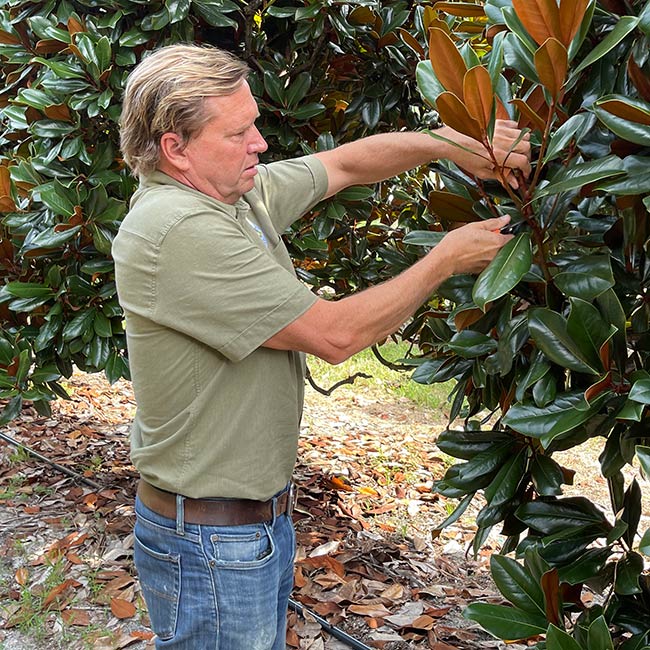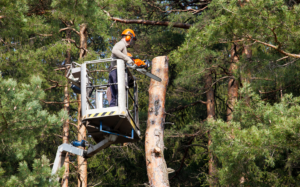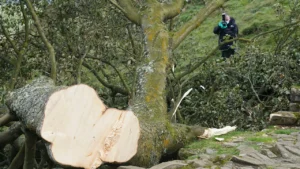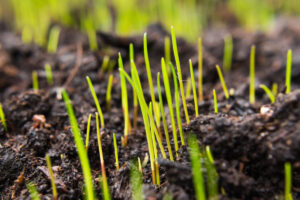A Complete Guide
Magnolia trees are admired for their stunning blooms and glossy green leaves, making them a popular choice for landscapes. However, like all trees, they require proper maintenance to thrive. Trimming magnolia trees is crucial for maintaining their shape, encouraging healthy growth, and preventing diseases. Unlike other trees, magnolias are sensitive to trimming, so it’s important to follow the correct methods and timing to avoid damaging them. This comprehensive guide will walk you through the steps of how to trim a magnolia tree, when the best time to do so is, the cost of hiring a professional service, and the equipment required for the job. Whether you have a Southern Magnolia or a Star Magnolia, this guide will help you keep your tree healthy and beautiful for years to come.
Step-by-Step Guide to Trimming a Magnolia Tree
Trimming a magnolia tree requires a careful approach to ensure you do not harm the tree’s growth or its flowering potential. Follow these steps to trim your magnolia tree correctly:
- Evaluate the Tree:
- Start by assessing the overall shape and health of the tree.
- Identify any dead, damaged, or diseased branches that need removal.
- Gather the Right Tools:
- Depending on the branch size, use pruning shears, loppers, or a pruning saw.
- A pole pruner may be needed for taller trees.
- Remove Dead and Diseased Wood:
- Begin by cutting away any dead, damaged, or diseased branches.
- Make cuts just outside the branch collar (the swollen area where the branch meets the trunk) to promote proper healing.
- Thin Out Overcrowded Branches:
- Trim branches that are crossing or growing inward towards the center of the tree.
- This helps improve air circulation and light penetration, which is essential for healthy growth.
- Shape the Tree:
- When shaping the tree, make sure to trim branches selectively to maintain a natural appearance.
- Avoid cutting the main branches unless necessary, as this can disrupt the tree’s shape.
- Prune Suckers and Water Sprouts:
- Remove any suckers (growth from the base of the tree) and water sprouts (shoots growing straight up from branches).
- These take energy away from the main tree and can cause structural issues.
- Limit the Amount of Pruning:
- Only trim up to 20% of the tree’s canopy in a single season to avoid stressing the tree.
- Magnolia trees are sensitive to heavy pruning, so it’s best to spread out trimming over several years if needed.
- Clean Up:
- Remove all trimmings from around the tree to prevent pests and diseases from spreading.
- Inspect your work and make any additional small cuts to perfect the tree’s shape.

Best Time to Trim a Magnolia Tree
Timing is crucial when it comes to trimming magnolia trees due to their sensitive nature. Here are the best times to trim based on the type of magnolia:
- Late Winter to Early Spring (Before Growth Begins):
- For deciduous magnolias (those that lose their leaves in winter), the best time to trim is in late winter or early spring before new growth begins. This allows for easy visibility of the tree’s structure.
- After Flowering (Late Spring to Early Summer):
- For evergreen magnolias (like the Southern Magnolia), the best time to trim is immediately after flowering in late spring or early summer. This timing allows the tree to recover and set buds for the next flowering season.
- Avoid Late Summer to Fall:
- Trimming in late summer or fall can stimulate new growth that may not harden off before winter, leading to damage from cold weather.
Cost of Professional Magnolia Tree Trimming
Hiring a professional to trim a magnolia tree can vary in cost based on the tree’s size, location, and the extent of the trimming required. Below is a general cost guide:
| Service | Average Cost | Factors Influencing Cost |
|---|---|---|
| Small Tree (up to 15 feet) | $100 – $300 | Accessibility, number of branches to trim |
| Medium Tree (15 – 30 feet) | $300 – $600 | Tree health, complexity of trimming needed |
| Large Tree (over 30 feet) | $600 – $1,500 | Proximity to structures, use of specialized equipment |
| Additional Services (disease treatment, fertilization) | $50 – $150 per service | Specific health needs of the tree |
- Factors Affecting Cost:
- Tree Size and Accessibility: Larger trees or those in hard-to-reach areas will cost more due to the need for more labor and specialized equipment.
- Tree Health: Trees that require additional care for disease or pest management will increase costs.
- Location: Trees near buildings, power lines, or other obstacles can add to the complexity and cost of the job.
- Debris Removal: Some companies charge extra for cleaning up and disposing of trimmings.
Equipment Required for Trimming a Magnolia Tree
Using the right tools ensures the trimming process is efficient and safe. Below is a list of recommended equipment:
- Pruning Shears: Ideal for small branches up to 1/4 inch thick.
- Loppers: Used for medium branches up to 1-1/2 inches thick.
- Pruning Saw: Suitable for larger branches over 1-1/2 inches thick.
- Pole Pruner: Helps reach higher branches without needing a ladder.
- Ladder: A stable, preferably tripod ladder, which provides safety while trimming.
- Safety Gear: Includes gloves, safety glasses, and a hard hat to protect against falling debris.
- Disinfectant: To clean tools between cuts, particularly when working with diseased branches, to prevent spreading pathogens.
Additional Tips for Trimming Magnolia Trees
- Sterilize Tools: Always sterilize your tools between cuts, especially when dealing with diseased branches, using a disinfectant like rubbing alcohol or a bleach solution.
- Avoid Over-Pruning: Never remove more than 20% of the tree’s canopy in one trimming session. Over-pruning can shock the tree and affect its health and flowering.
- Proper Cutting Technique: Make clean cuts just outside the branch collar to help the tree heal more effectively and prevent disease entry.
Conclusion
Trimming a magnolia tree is a vital part of its care, enhancing its shape, promoting healthier growth, and preventing diseases. Whether you choose to trim the tree yourself or hire a professional, understanding the proper techniques and timing is essential for the tree’s health. Regular maintenance and careful pruning will ensure your magnolia tree remains a beautiful and thriving centerpiece in your landscape. By following this guide, you can enjoy the stunning beauty of your magnolia tree while ensuring its long-term health and vitality. Whether tackling a small trim or a major pruning, the key is to be gentle and mindful of the tree’s natural growth patterns.




